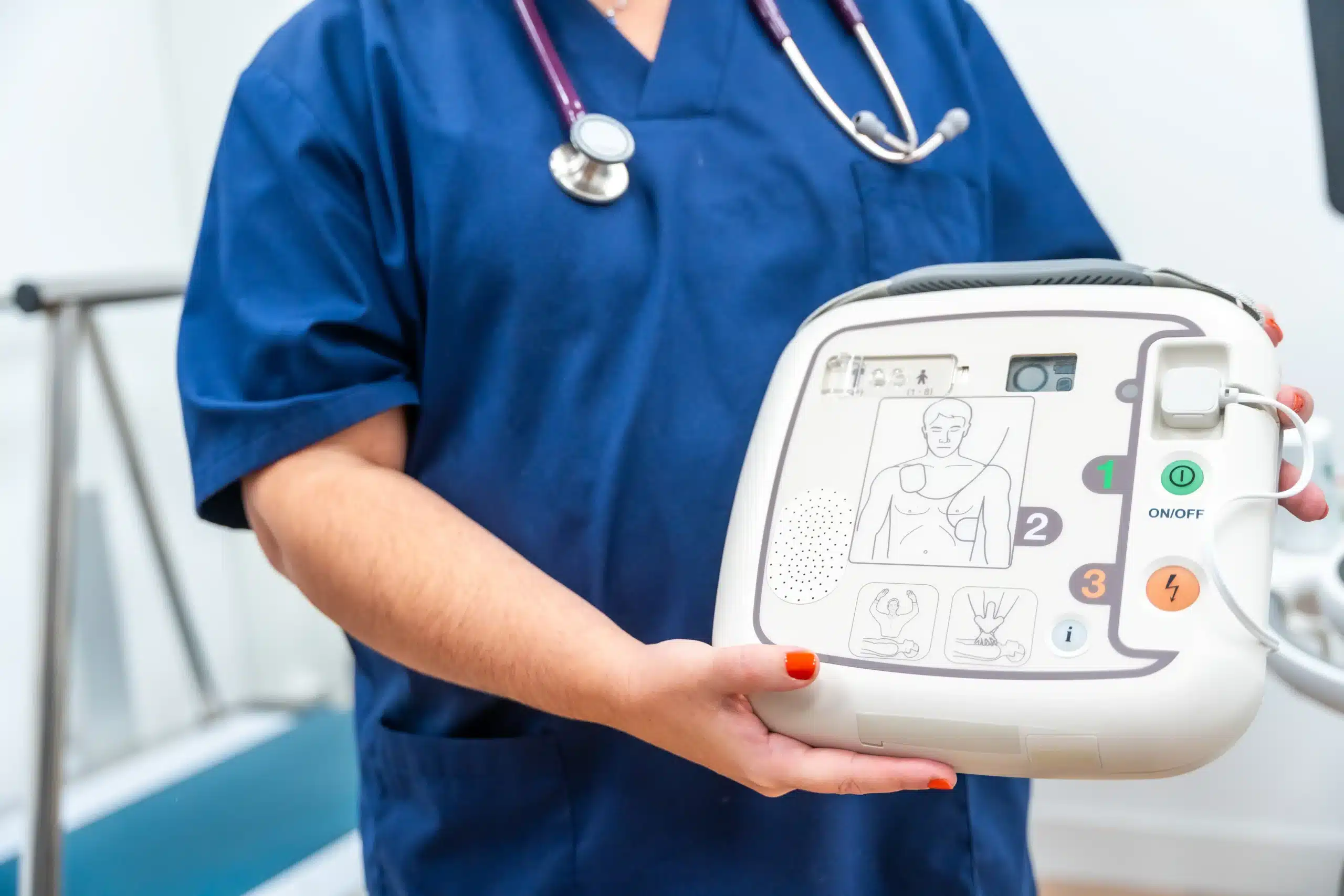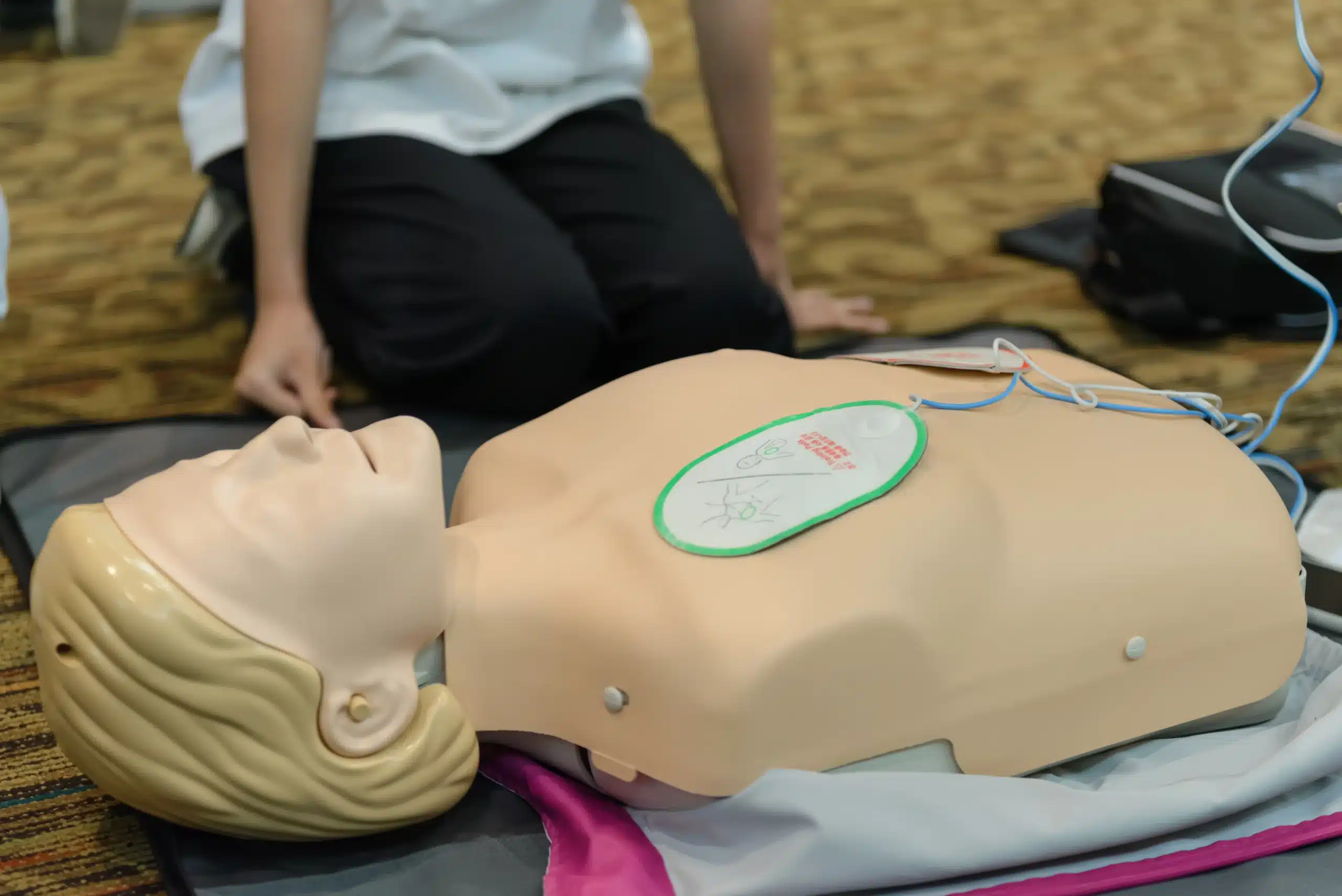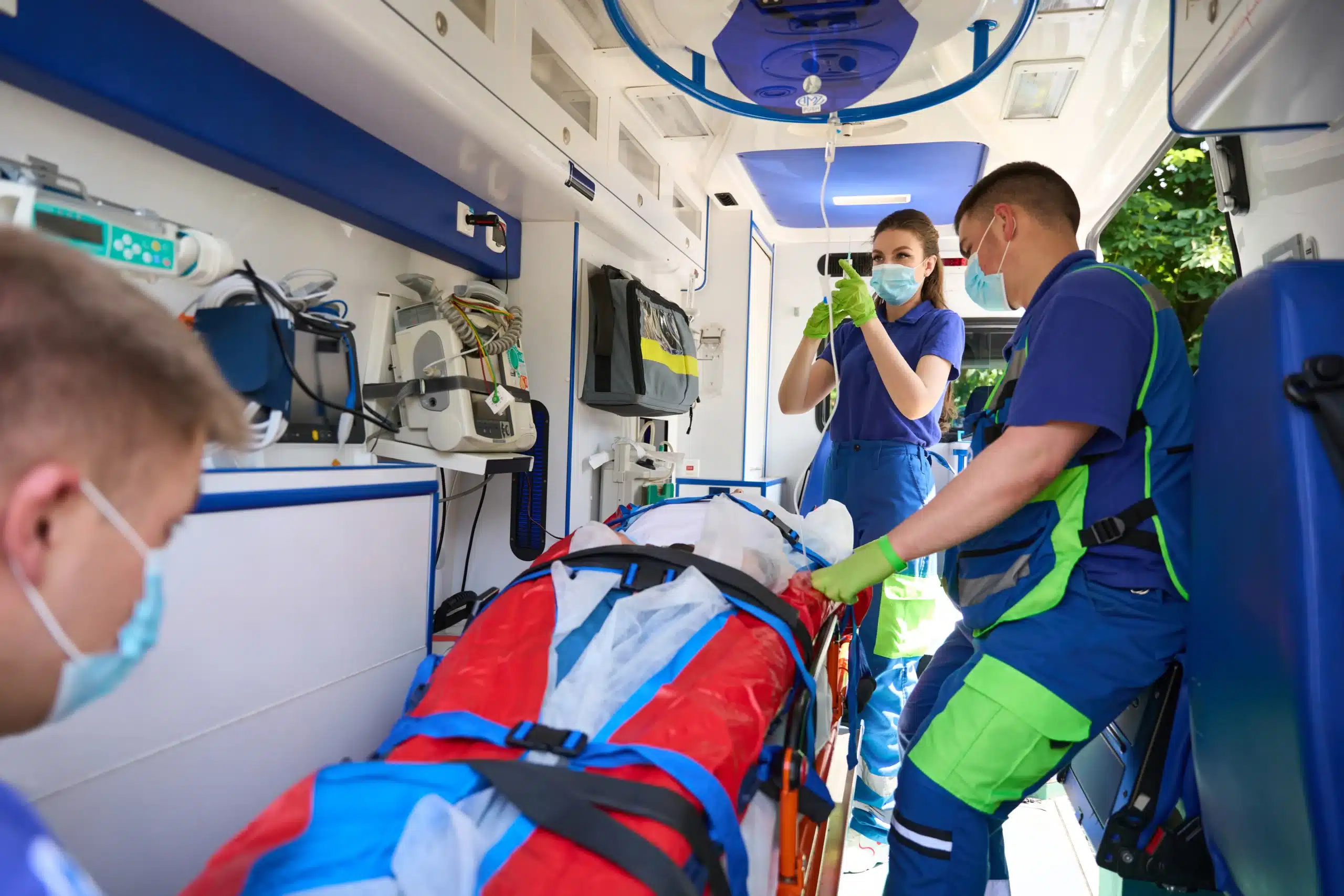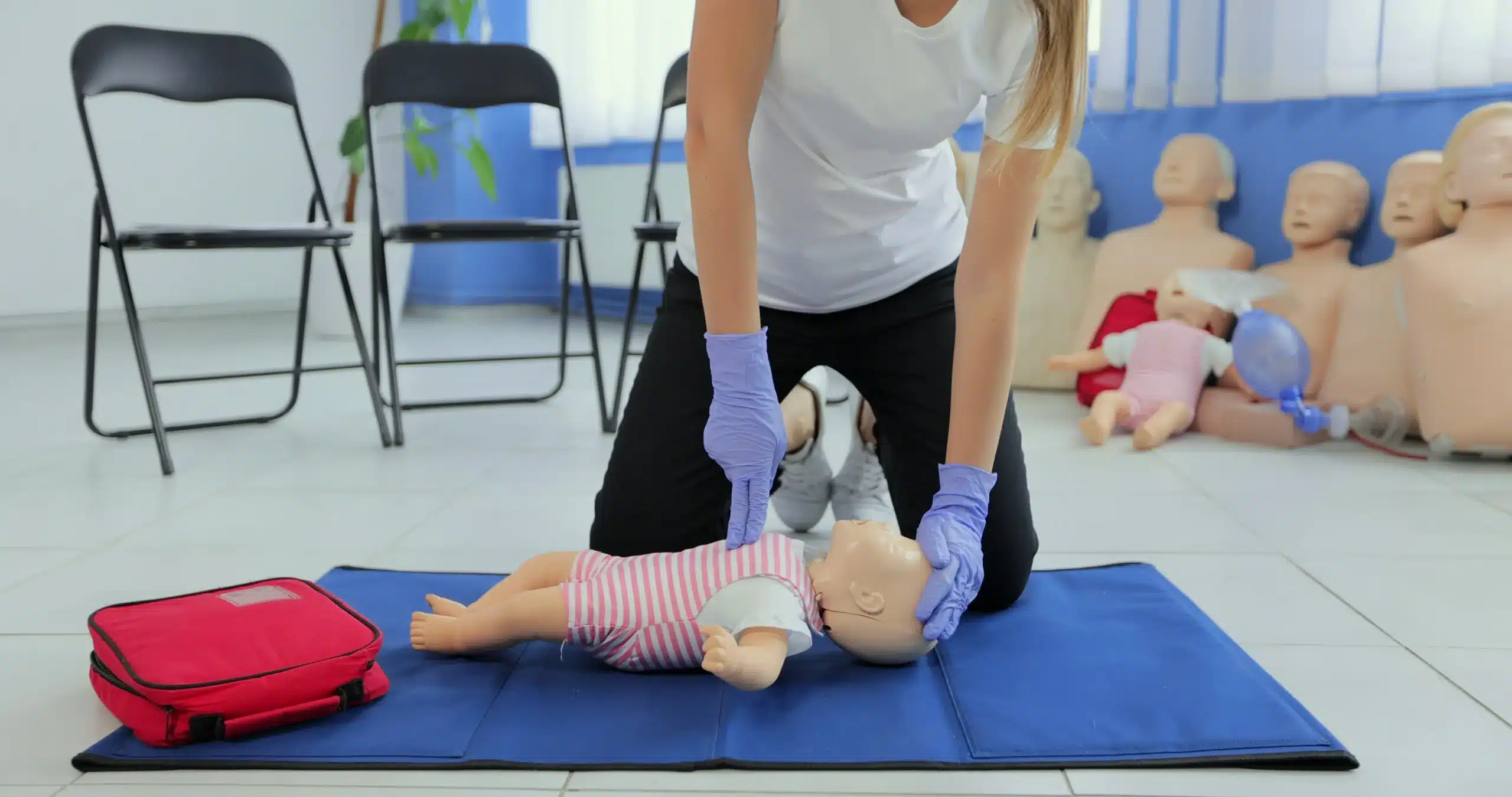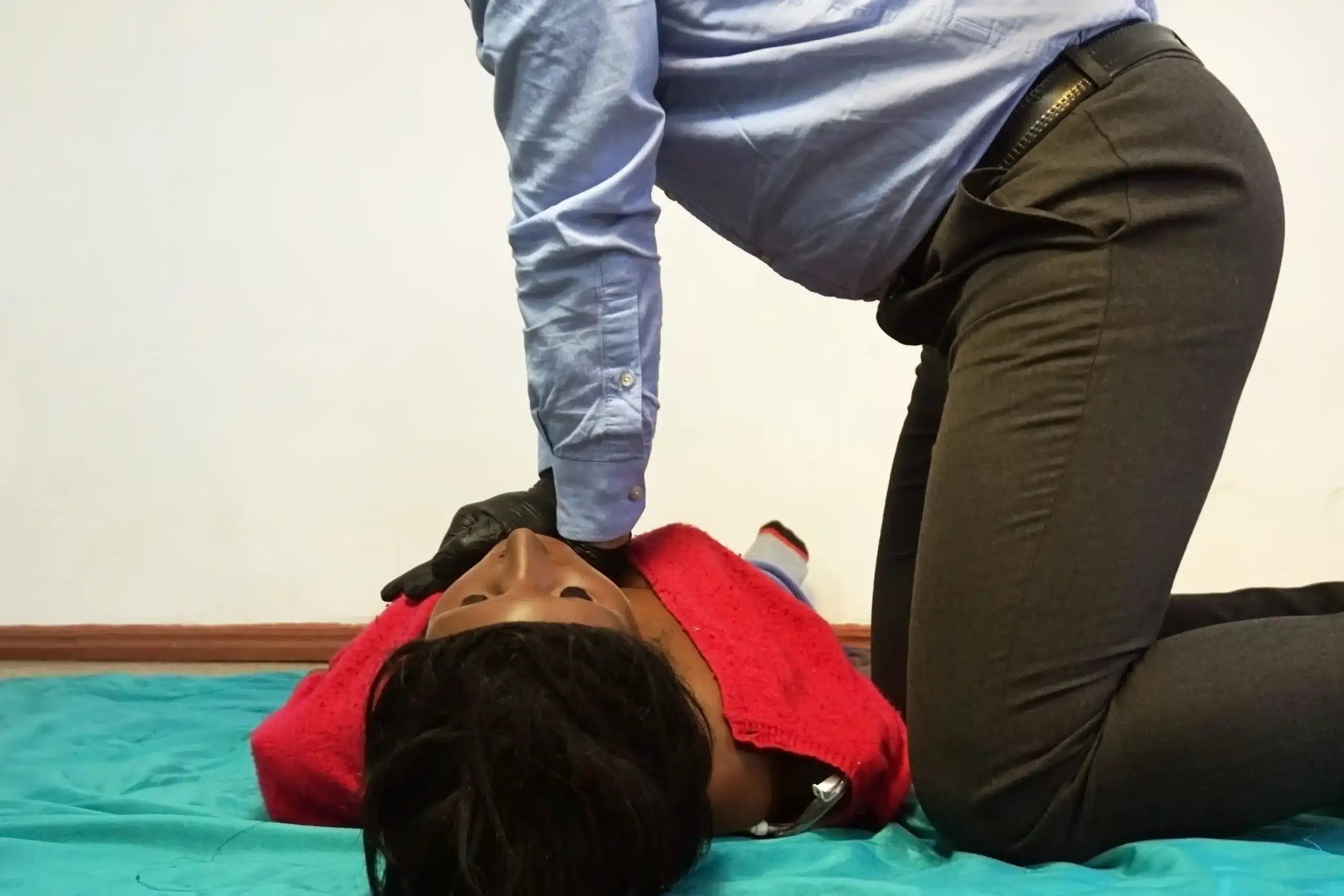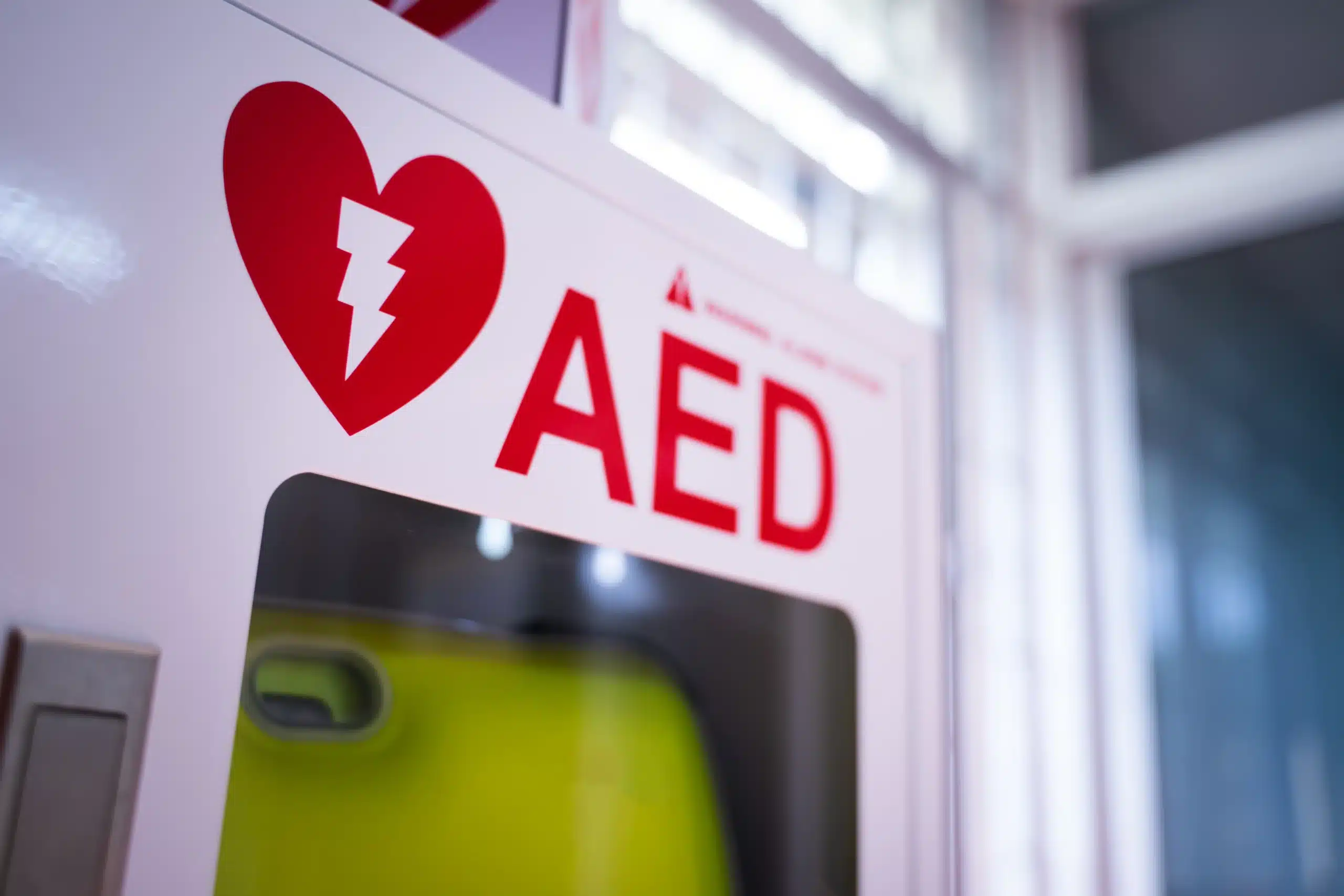Providing top-notch pediatric care in a fast-paced city like San Francisco requires staying at the forefront of life-saving techniques. PALS HeartCode in San Francisco offers a modern approach to Pediatric Advanced Life Support training, combining online learning with hands-on practice. This article will guide you through the key aspects of PALS HeartCode, from understanding its blended learning format to navigating the certification process. We’ll also delve into the course content, discuss associated costs, and highlight top training providers in the San Francisco area. Get ready to enhance your skills and confidence in responding to pediatric emergencies.
Key Takeaways
- PALS HeartCode blends online learning with hands-on skills: This flexible format allows you to learn at your own pace and then demonstrate your skills in person.
- Find a PALS HeartCode course that fits your needs and budget: San Francisco offers a variety of training centers with different pricing structures. Research providers like Safety Training Seminars to find the best fit.
- Prepare for your course by reviewing key materials and ensuring your tech is ready: This will help you get the most out of your training and feel confident during the skills assessment.
What is PALS HeartCode? A Guide for San Francisco Healthcare Providers
PALS HeartCode is a blended learning course combining online learning with hands-on skills practice. It teaches healthcare providers the knowledge and skills needed to respond to pediatric emergencies. This format lets you learn at your own pace through interactive modules and simulations before demonstrating your skills in person. The American Heart Association describes blended learning as completing part of the course independently, followed by a hands-on skills check. This flexible structure makes PALS HeartCode convenient for busy San Francisco professionals. It’s especially effective for learning PALS’ systematic approach to pediatric assessment, resuscitation, and stabilization. The program uses adaptive learning technology, adjusting the curriculum to your individual learning needs and focusing on areas where you need additional practice. This personalized approach promotes efficient and effective learning. Laerdal Medical, a leader in healthcare simulation and training, offers further details on HeartCode PALS. PALS HeartCode certification is valuable for various healthcare providers involved in infant and child care, including physicians, nurses, paramedics, and respiratory therapists. It’s an essential tool for anyone who might need to respond to a pediatric emergency.
What is PALS HeartCode and Who Needs It?
What is PALS HeartCode?
PALS HeartCode is an online program that teaches healthcare providers the skills they need to respond to pediatric emergencies. It focuses on recognizing and managing life-threatening conditions in infants and children. The program uses a personalized learning approach, adjusting to each student’s pace and knowledge as they move through the material. This allows healthcare professionals to efficiently master PALS concepts by concentrating on areas where they need the most practice. The American Heart Association offers more information on PALS course options.
Who should take PALS HeartCode training?
PALS HeartCode training is designed for healthcare providers directly involved in the care of infants and children during emergencies. This includes physicians, nurses, paramedics, respiratory therapists, and other medical personnel working in emergency departments, intensive care units, or other critical care settings. If you’re a healthcare professional looking to get PALS certified or recertified, this course offers a flexible and convenient option.
Benefits of PALS HeartCode
One of the key advantages of PALS HeartCode is its flexibility. The online portion allows you to learn at your own speed, fitting the training around your busy schedule. Beyond just knowledge, PALS HeartCode emphasizes critical thinking and teamwork—essential skills for effective patient care. The program covers a wide range of topics, from basic life support to advanced life support techniques, all geared towards providing the best possible care for pediatric patients. You can review Laerdal’s PALS student guide for a more in-depth look at the program.
PALS HeartCode Formats and Duration
Choosing the right PALS HeartCode format is key to successfully completing your training. Let’s break down the different learning options available.
Online, Self-Paced Learning
The online, self-paced portion of the PALS HeartCode course offers flexibility for busy professionals. This web-based program allows you to learn the necessary knowledge and skills at your own speed, fitting it into your schedule. You’ll work through interactive modules, case studies, and simulations, building a strong foundation in pediatric advanced life support.
In-Person Hands-On Training
After completing the online portion, you’ll participate in a hands-on skills session. This in-person training typically lasts around five hours, including breaks. It’s a crucial component, allowing you to practice essential skills like CPR, ventilation, and defibrillation on infant and child mannequins under the guidance of an instructor. This hands-on practice ensures you’re prepared to respond confidently in real-life emergencies.
Hybrid Learning: Online and In-Person
PALS HeartCode utilizes a blended learning approach, combining online learning with in-person training. This hybrid format lets you absorb core concepts at your own pace online before demonstrating your skills in a real-world setting. This combination offers the best of both worlds: flexible online learning and essential hands-on practice.
How Long Does PALS HeartCode Take?
The online portion of the PALS HeartCode course uses adaptive learning technology. This means the time it takes to complete varies based on your experience. If you’re already familiar with the material, you might move through it quickly. If you’re learning new concepts, the program will adjust to provide more support and practice. The in-person skills session has a set time commitment, usually about five hours.
Course Content and Certification
This section covers what you’ll learn in a PALS HeartCode course and how you’ll earn your certification.
Key Topics in PALS HeartCode
The PALS HeartCode course equips healthcare providers with the knowledge and skills to respond to pediatric emergencies. It covers essential topics, including child and infant basic life support (BLS), systematic assessment, rhythm recognition, respiratory emergencies, and vascular access. The curriculum emphasizes early intervention and effective team dynamics. You’ll learn how to recognize and manage life-threatening conditions in infants and children, focusing on rapid assessment and treatment.
Online Modules and Simulations
PALS HeartCode blends online learning with in-person skills practice. The online portion uses interactive modules and realistic simulations to reinforce your learning. The American Heart Association uses an adaptive learning path, adjusting to your pace and comprehension. This personalized approach helps you focus on areas where you need more practice. You’ll work through various scenarios, making decisions and seeing the consequences of your actions in a safe, virtual environment.
Skills Assessment
After completing the online modules, you’ll participate in a hands-on skills session with a certified instructor. This session focuses on demonstrating proficiency in core PALS skills, including child and infant BLS. You’ll practice essential techniques like chest compressions, rescue breaths, and bag-mask ventilation. Contact Safety Training Seminars to confirm current skill assessment requirements. This practical assessment ensures you can confidently apply your knowledge in real-world situations.
Get Certified in PALS HeartCode
Once you’ve successfully completed both the online modules and the in-person skills assessment, you’ll receive your PALS certification. This nationally recognized credential demonstrates your competence in providing advanced life support to pediatric patients. The PALS HeartCode certification is valid for two years. You’ll need to recertify to maintain your skills and knowledge. Find convenient training locations near you in our Northern California CPR directory.
PALS HeartCode Costs in San Francisco
Understanding the costs associated with PALS HeartCode training in San Francisco is essential for planning your certification. While prices can vary slightly based on the provider, here’s a general overview of what you can expect. Remember to check with your chosen training center for their most up-to-date pricing. Safety Training Seminars offers competitive rates and would be happy to answer any questions.
Initial Certification Costs
If you’re new to PALS, the initial certification typically costs around $260. This covers the comprehensive training program, including both the online cognitive portion and the in-person skills session. This combined approach ensures you receive a thorough understanding of pediatric emergency care. Heart Start CPR offers a good example of standard pricing for the San Francisco area.
Recertification Costs
If you’re already PALS certified and need to renew, the recertification process is generally more affordable, usually around $190. This streamlined process focuses on refreshing your knowledge and skills to maintain your certification. Heart Start CPR provides a helpful benchmark for recertification pricing.
Additional Costs
Beyond the core certification and recertification fees, keep in mind potential additional costs. Some providers structure their programs with separate fees for the online portion and the in-person skills checkoff. UCSF’s program, for instance, lists the online portion at $168 (paid directly to the American Heart Association) and the in-person skills session at $90. Factor in potential costs for study materials or practice tests, too. Contacting providers like Safety Training Seminars directly can help clarify the total cost upfront.
Top PALS HeartCode Providers in San Francisco
Finding the right PALS HeartCode training provider is key for a smooth and effective learning experience. Here are some reputable options in San Francisco:
Safety Training Seminars
Safety Training Seminars, a woman-owned AHA Training Center, offers high-quality American Heart Association (AHA) courses, including PALS. They focus on providing competitive pricing for essential training classes in the San Francisco Bay Area. Explore their PALS courses for more details.
Heart Start CPR
Heart Start CPR trains over 6,000 students annually in the San Francisco Bay Area. They provide two-year certifications in Pediatric Advanced Life Support (PALS) to ensure healthcare professionals are prepared for emergencies. Visit their website to learn more about their training options.
American Heart Association Bay Area CPR
This training center emphasizes the AHA’s RQI (Resuscitation Quality Improvement) program—a modern and efficient way for medical professionals in San Francisco to receive their official AHA PALS certification cards. They prioritize high-quality training, which you can explore further on their website.
Cascade Training
Cascade Training Center provides all levels of AHA resuscitation training, including initial and renewal PALS certification courses. They serve healthcare professionals in the San Francisco region. Locate a Cascade Training Center near you.
UCSF Medical Education
The UCSF Kanbar Center offers AHA courses, including PALS, to UCSF students, staff, and faculty. This helps ensure the local healthcare community is well-trained. Browse their course catalog for more information.
Prepare for Your PALS HeartCode Course
Getting ready for your PALS HeartCode course involves a few key steps to ensure you’re set up for success. Understanding the prerequisites, gathering your materials, and making sure you can access the online learning environment will help you feel prepared and confident.
Prerequisites and Materials
The PALS HeartCode course is designed for healthcare providers like physicians, nurses, paramedics, and respiratory therapists who are involved in the emergency care of infants and children. Before you begin, make sure you have a current BLS Provider card, as it’s a prerequisite for PALS HeartCode. You’ll also need to acquire the PALS HeartCode Part 1 online completion card, which you can purchase through the American Heart Association. While textbooks aren’t mandatory, the PALS Provider Manual can be a helpful resource for deeper learning.
Study Tips and Resources
HeartCode PALS uses a blended learning approach, combining online modules with a hands-on skills session. The online portion lets you learn at your own speed, working through key concepts and practicing with interactive simulations. Make the most of this flexibility by scheduling dedicated study time. The HeartCode PALS Student Guide offers helpful advice and explains the course structure. Remember, the goal is not just passing a test, but developing your critical thinking skills to improve patient care. Consider using additional resources like practice tests or videos to reinforce your learning.
Technical Requirements for Online Learning
Before starting the online modules, check that your computer meets the necessary technical requirements. You’ll need a reliable internet connection, an updated browser, and the correct software, such as Flash Player. The online portion of the course varies in length depending on your experience, but the hands-on skills session usually takes about five hours. Make sure you set aside enough time for both the online and in-person components. If you run into any technical issues, reach out to your course provider for support. Being prepared technically will let you focus on the course content and get the most out of the experience.
Overcome Common PALS HeartCode Challenges
Let’s face it: taking any certification course comes with its hurdles. PALS HeartCode is no different. But with a little preparation and the right mindset, you can overcome these common challenges and succeed in your training.
Technical Difficulties
While HeartCode PALS offers a convenient online learning experience, technical issues can occasionally arise. Ensure your computer meets the technical requirements outlined by your chosen provider, like Safety Training Seminars. A stable internet connection is essential. If you experience problems, contact your course provider’s support team immediately. They can offer troubleshooting tips or alternative solutions to keep your training on track. Remember, the HeartCode PALS program is designed to improve patient care through enhanced critical thinking and teamwork, so a smooth technical experience is key.
Remember Key Information
The online portion of HeartCode PALS covers a lot of important material. One helpful tip is to break down the content into smaller, manageable chunks. Focus on one module at a time and review key concepts regularly. Take advantage of any practice tests or quizzes offered by your training provider. The American Heart Association also provides resources that can reinforce your learning. By focusing on key information and using available resources, you’ll be well-prepared for the hands-on skills session.
Manage Your Time
Balancing your PALS HeartCode training with other commitments requires effective time management. Create a realistic study schedule that fits your lifestyle. Since the online portion is self-paced, you can study whenever and wherever it’s convenient. Allocate specific time slots for studying and stick to them as much as possible. This will help you stay organized and avoid feeling overwhelmed. Remember, the skills session includes essential learning stations like Respiratory, Rhythm Disturbances, and Vascular Access, so adequate preparation is crucial. Find a location and schedule that works for you.
Manage Skills Assessment Anxiety
It’s normal to feel some anxiety about the skills assessment portion of PALS HeartCode. Remember, the goal is to demonstrate the skills you’ve learned in a supportive environment. Practice the skills regularly and visualize yourself performing them confidently. If your training provider offers practice sessions, take advantage of them. Consider reaching out to your instructor or classmates for support and encouragement. Safety Training Seminars offers convenient classes to help you feel confident and prepared. With thorough preparation and a positive mindset, you can manage your anxiety and perform your best.
Maintain Your PALS HeartCode Certification
Keeping your PALS HeartCode certification current is crucial for providing the best possible care. This section covers everything you need to know about renewal requirements, continuing education, and staying up-to-date with the latest guidelines.
Renewal Requirements
PALS HeartCode certification is valid for two years. To maintain your credentials, renew your certification before it expires. This ensures your skills and knowledge remain sharp and aligned with current best practices in pediatric advanced life support. Check with your certifying organization or employer for specific renewal deadlines and processes. AHA PALS certification typically follows this two-year renewal cycle.
Continuing Education
Continuing education is key to maintaining your PALS HeartCode certification and enhancing your skills. Many certifying bodies offer continuing education credits (CEs) that can contribute to your renewal requirements. Look for opportunities to expand your knowledge and stay informed about advancements in pediatric care. PALS courses often cover various topics relevant to PALS, allowing you to deepen your expertise and improve patient outcomes.
Stay Updated on Guidelines
Staying informed about the latest American Heart Association (AHA) guidelines is essential for practicing effective pediatric advanced life support. These guidelines are periodically revised to reflect the most current research and best practices. Make sure you’re using the most recent PALS Provider Course materials and adhering to the latest recommendations. Refer to the AHA resources for the most up-to-date information. Staying current with guidelines ensures your training and practice align with the highest standards of pediatric care.
Additional PALS HeartCode Resources
This section offers supplemental resources to enhance your PALS HeartCode learning experience. Whether you’re looking for extra study materials, practice tests, or video tutorials, these resources can help solidify your understanding of pediatric advanced life support.
Recommended Study Materials
The HeartCode PALS Student Guide provides a helpful overview of the course and key concepts. It’s a great resource to review before, during, and after your training. For a broader perspective, this comprehensive guide offers insights into the course content and the hands-on skills session. Reviewing these materials will help you develop the critical thinking skills and team dynamics necessary for providing quality patient care.
Online Practice Tests
While the HeartCode PALS FAQ clarifies that testing on case scenarios during the hands-on session is optional, practicing with online tests can still be beneficial. These tests can help you assess your knowledge of child and infant basic life support (BLS) and other essential PALS concepts. Look for practice tests that cover topics like respiratory emergencies, rhythm disturbances, and vascular access. This extra practice can build your confidence for the skills assessment portion of the course.
Video Tutorials
The American Heart Association website offers information on various PALS course options, including details about the HeartCode PALS program. Many other online resources provide video tutorials demonstrating key PALS procedures and techniques. These videos can be especially helpful for visualizing the steps involved in pediatric advanced life support and reinforcing your learning from the online modules. Supplementing your studies with video tutorials can improve your understanding and retention of the material.
Related Articles
- AHA PALS Classes in Bay Area, CA – San Francisco Bay Area CPR Classes
- CPR, BLS, ACLS, PALS, and First-aid classes in SF Bay Area, CA
- CPR Certification in San Jose: Your Complete Guide – San Francisco Bay Area CPR Classes
- CPR Training in Sacramento: Your Ultimate Guide – San Francisco Bay Area CPR Classes
- The Lifesaving Importance of CPR in Healthcare
Frequently Asked Questions
What exactly is involved in the PALS HeartCode blended learning format? PALS HeartCode combines online learning with a hands-on skills session. You’ll work through interactive modules and simulations at your own pace online, then demonstrate your skills in person with a certified instructor. This approach offers flexibility while ensuring you get practical experience.
How long does it take to complete the PALS HeartCode training? The online portion varies depending on your prior knowledge, as the program adapts to your learning pace. The in-person skills session typically takes about five hours.
If I’m already PALS certified, do I need to take the entire course again for recertification? Recertification is a streamlined process focused on refreshing your existing knowledge and skills. It’s generally shorter and less expensive than initial certification.
Where can I find PALS HeartCode training in San Francisco? Several reputable providers offer PALS HeartCode training in San Francisco, including Safety Training Seminars, Heart Start CPR, and American Heart Association Bay Area CPR. Check their websites for course schedules and pricing.
What if I have trouble with the online portion of the course? Contact your training provider’s support team if you encounter technical difficulties or have questions about the online modules. They can offer assistance and ensure you can complete the training successfully.


